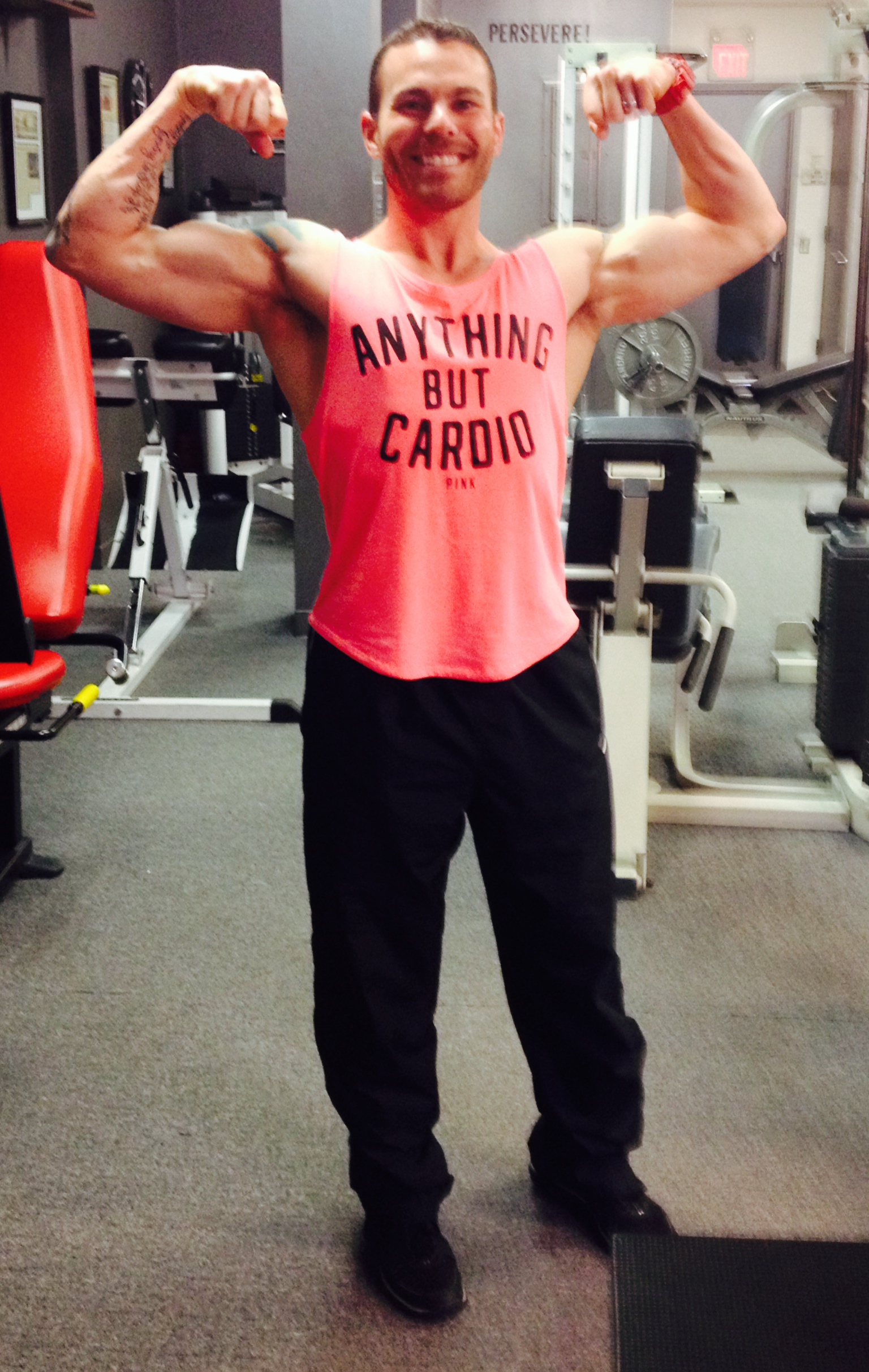Continuing on with our look at the misinformation and misunderstandings tied to conventional bodybuilding wisdom and offering better (unconventional) alternatives.
#2 – You Should Not Eat too Many Carbs, But Should Consume a lot of Protein.
Wrong!
Despite being disproved time and time again, the belief that carbs make you fat has stuck around like gum under a middle-schoolers desk.

In my favorite aisle in the supermarket…the cereal aisle!
This is a deep topic that deserves its own attention so I am going to avoid going into extensive detail. I’ll just summarize why if anything you want to be carb heavy for the purpose of achieving the lean muscular look of a bodybuilder. But first, let’s address protein.
Based on an extensive amount of research protein intake for someone who resistance trains or performs high intensity exercise need to only be 1.6 – 2.4g/kg of fat free mass.(1-6) Or for those of you that eschew the metric system, around 1 gram per pound of lean body mass. That means a 180lb. male with 10% body-fat would only need approximately 162g protein per day (even if in a caloric deficit).
Why high carb?
- Because carbs are protein sparing. In the absence of carbohydrates or low glycogen levels amino acids are called upon to do “double-duty” and supply energy needs. This is very inefficient and leaves fewer to perform their primary job of repairing and building muscle tissue.
- They along with ATP are the muscles primary source of energy for forceful muscle contractions. Low carb diets leave little immediate energy available for intense anaerobic exercise.7
- Carbs combined with water is what gives our muscles their fullness and hard appearance (more on this in Pt.3).
#3 – You Must do Cardio to get Shredded
I’ll do anything but cardio!

I am not saying to avoid it if you enjoy it. Or that it can’t assist in fat-loss—especially if you do HIIT or some form of high intensity cardio.8, 9 But the notion that 30-60 minutes of aerobic exercise several times a week to get bodybuilder lean is nonsense.
Thermogenesis is the name of the game and the caloric expenditure needed to trigger can be achieved through exercise or nutrition. But really, it’s all about nutrition. You can do cardio to help put you in a caloric deficit or you can choose to consume less calories. Skip on the four Oreo cookies and you just saved yourself 30 minutes on the elliptical. I know which option I’m going with!
There’s only a few reasons I’ve come across why some people must absolutely implement cardio to assist with fat-loss:
- Flat Ass Syndrome – Nope, it has nothing to do with developing glutes to rival Jen Selter. This is all about the terrible scenario that plagues millions of people which is extreme inactivity and sedentary work. Put another way, people basically sit on their ass allllllllllll day. They go to work by sitting on their ass in a car or on a train. They get to work and sit on their ass in front of a computer for 8-10 hours. They go home the same way came into work…sitting on their ass. And then when they get home they sit their ass in front of a television while checking Twitter updates on a tablet. If this resembles your life in some way, shape or form then a little cardio might be necessary to.
- Diet is inadequate – Meaning they just have not touched on the proper distribution of calories and macronutrients to make fat-loss consistent or they have not allotted enough TIME to lose the necessary amount of BF. The latter is very problematic for those competing in bodybuilding or any type of physique contest because the harder one needs to push their diet and exercise to meet a deadline the more susceptible they become to muscle loss.The negative impact is twofold. First, even if you reach your desired weight or degree of leanness you will not look your best. Second, you will have suppressed your metabolism making it harder to lose more body-fat and easier to regain body-fat.
- Metabolic Kick-start – Sometimes you can do everything right and the G.A.S. (General Adaptation Syndrome) goes and spoils it all. The more easily your body adapts to your diet the tougher it becomes to keep your metabolism elevated. Adding some HIIT or any form of higher intensity cardio can help provide a different stimulus to cause a metabolic response.
#4 – You Need to Use a lot of Supplements
That depends on what you define as “a lot”. I personally use protein powder, Shaklee Vitalizer, and creatine and some BCAA’s during competition prep. That’s pretty much it.
My pre-workout is typically a cup of black coffee or if Rich Fitter hooks me up with some pre-workout samples I might use that for a shot of energy instead.
The truth is, while natural bodybuilders are probably the largest consumer of supplements many of the top natural bodybuilders in the world don’t take all that many. Things such as protein powders, multi-vitamins, Omega’s, creatine, and BCAA’s are pretty standard but beyond that most everything else tends to be unnecessary if your nutrition and training is on point.
References
- Garthe I, Raastad T, Refsnes PE, Koivisto A, Sundgot-Borgen J. Effect of two different weight-loss rates on body composition and strength and power-related performance in elite athletes. Int J Sport Nutr Exerc Metab. 2011 Apr;21(2):97-104.
- Mettler S, Mitchell N, Tipton KD. Increased protein intake reduces lean body
mass loss during weight loss in athletes. Medicine and Science in Sports and Exercise. 2010; 42(2), 326-337. - Pasiakos SM, Cao JJ, Margolis LM, Sauter ER, Whigham LD, McClung JP, Rood JC, Carbone JW, Combs GF Jr, Young AJ. Effects of high-protein diets on fat-free mass and muscle protein synthesis following weight loss: a randomized controlled trial. FASEB J. 2013 Jun 5.
- Phillips SM, Moore DR, Tang JE. A critical examination of dietary protein requirements, benefits, and excesses in athletes. Int J Sport Nutr Exerc Metab. 2007 Aug;17 Suppl:S58-76.
- Helms ER, Zinn C, Rowlands DS, Brown SR A systematic review of dietary protein during caloric restriction in resistance trained lean athletes: a case for higher intakes. Int J Sport Nutr Exerc Metab. 2014 Apr;24(2):127-38. doi: 10.1123/ijsnem.2013-0054. Epub 2013 Oct 2.
- http://suppversity.blogspot.de/2013/06/evidence-from-metabolic-ward-16-24gkg.html
- Couto PG, Bertuzzi R, de Souza CC, Lima HM, Kiss MA, de Oliveira FR, Lima-Silva AE. High-CHO Diet Induces Faster Final Sprint and Overall 10,000 m Times of Young Runners. Pediatr Exerc Sci. 2015 Apr 22. [Epub ahead of print]
- Falcone PH, Tai CY, Carson LR, Joy JM, Mosman MM, McCann TR, Crona KP, Kim MP, Moon JR. Caloric expenditure of aerobic, resistance, or combined high-intensity interval training using a hydraulic resistance system in healthy men. J Strength Cond Res. 2015 Mar;29(3):779-85. doi: 10.1519/JSC.0000000000000661.
- Greer BK, Sirithienthad P, Moffatt RJ, Marcello RT, Panton LB. EPOC Comparison Between Isocaloric Bouts of Steady-State Aerobic, Intermittent Aerobic, and Resistance Training. Res Q Exerc Sport. 2015 Feb 12:1-6. [Epub ahead of print]







 You ever have one of those clingy girlfriends or boyfriends? They need to constantly be around you and damn you if you’re not doing something every 5 minutes to make them feel special. They latch onto you like I latch onto my shotgun and NRA membership card. We know that being clingy is unhealthy yet some people insist on clinging to a certain training variable, put it on a pedestal and claim it as King of all Variables. Volume is not any more important than intensity, than intensity is any more important than frequency, or frequency any more important than volume, and on and on. The key is to figure out when a little more or a little less of any or all of them is necessary.
You ever have one of those clingy girlfriends or boyfriends? They need to constantly be around you and damn you if you’re not doing something every 5 minutes to make them feel special. They latch onto you like I latch onto my shotgun and NRA membership card. We know that being clingy is unhealthy yet some people insist on clinging to a certain training variable, put it on a pedestal and claim it as King of all Variables. Volume is not any more important than intensity, than intensity is any more important than frequency, or frequency any more important than volume, and on and on. The key is to figure out when a little more or a little less of any or all of them is necessary.